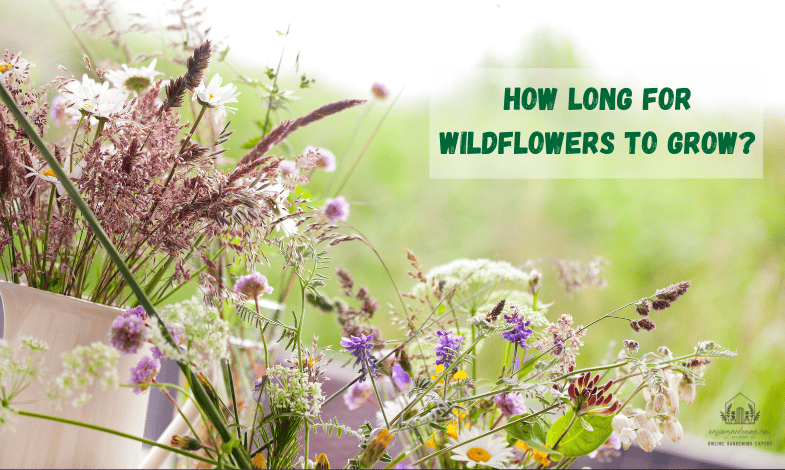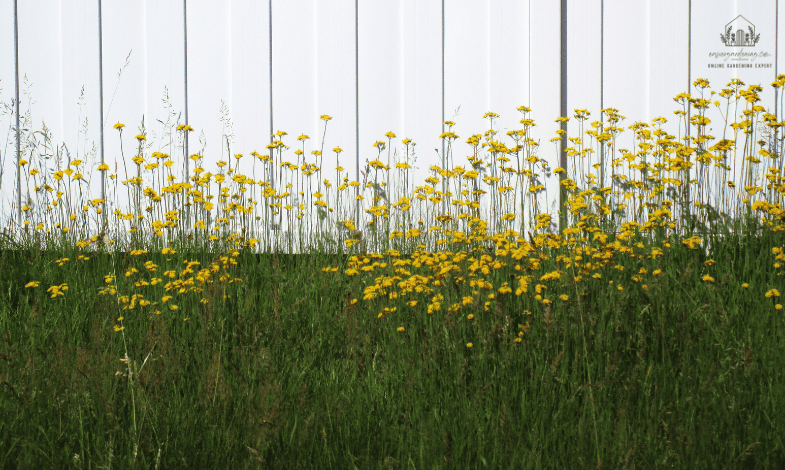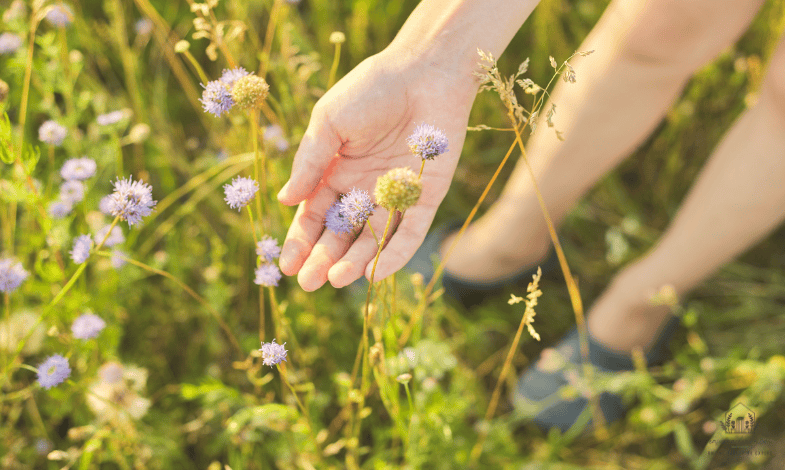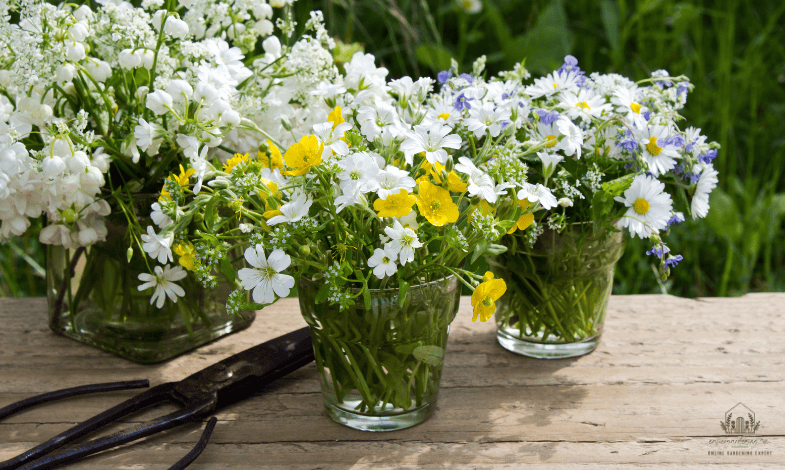Contents
- Planting Wildflowers Guide
- How Long Does It Take for Wildflowers to Grow?
- Factors Affecting Wildflower Growth
- Soil and Sunlight Requirements
- Ideal Planting Time
- How Long Do Wildflowers Take to Grow?
- Sprouting
- Blooming
- Wildflower Favorites: Brighten Up Your Garden
- Meadow Buttercup
- Common Sorrel
- Planting and Maintenance Tips
- Soil Preparation
- Mowing and Maintenance
Planting Wildflowers Guide
How Long Does It Take for Wildflowers to Grow?
Turning your garden into a wildflower haven is easier than you think. Let’s explain what you need to know about their growth cycles and needs.
Wildflowers have a quirky way of sprouting. They need a mix of darkness, moisture, and cold before they decide to pop up. Some wildflowers are picky and must be planted after a couple of hard frosts when the ground is good and frozen. These seeds will then wake up in spring when the soil warms to around 55-70°F.
| Growth Stage | What Happens |
|---|---|
| Germination | Seeds need moisture, darkness, and cold. |
| Sprouting | It starts in spring when soil hits 55-70°F. |
| Blooming | It depends on the species; some bloom from April to October. |
You can plant wildflowers in autumn (September/October) or spring (April/May). Autumn is usually the best bet because it means less waiting until spring, and the seeds get the perfect growing conditions from autumn and winter. Experts suggest autumn planting because the seeds need a good freeze to grow. But if you’ve kept your seeds cold, spring planting works too.
| Planting Time | Why It’s Good |
|---|---|
| Autumn | Less waiting, perfect conditions. |
| Spring | Great for seeds stored in the cold. |
Remember these tips to get your wildflower garden off to a great start. For more advice on planting and keeping your wildflowers happy, check out our article on how to grow perennial flowers from seeds.
Factors Affecting Wildflower Growth
Planting wildflowers can turn your garden into a colourful paradise, but it’s not just about tossing seeds around. Let’s break down the essentials: soil, sunlight, and the best times to plant.
Soil and Sunlight Requirements
Wildflowers are sun-lovers, needing at least six hours of direct sunlight daily. So, pick the sunniest spot in your garden to give them the light they crave. Here’s what you need to know about soil and sunlight:
Sunlight:
- Aim for at least six hours of direct sunlight each day.
- Avoid shady spots; wildflowers need open, sunny areas.
Soil:
- Wildflowers aren’t too picky but prefer well-draining soil.
- They can thrive in poor soil where other plants might fail.
- Minimal watering and fertilizing are usually enough.
Ideal Planting Time
Planting wildflower seeds can make a big difference in their growth and blooming. The best times to plant are in the spring or fall, each with its own perks:
Autumn Planting:
- Best time: September/October.
- Perk: Seeds get a natural freeze, which helps them germinate (The Grass People).
- Tip: Less waiting time for spring blooms.
Spring Planting:
- Best time: April/May.
- Perk: Seeds can be planted right after cold storage.
- Tip: Avoid winter planting; it’s a no-go.
| Planting Season | Best Months | Benefits |
|---|---|---|
| Autumn | September/October | Natural freeze helps germination, early spring blooms |
| Spring | April/May | Plant right after cold storage |
For more tips on planting and caring for wildflowers, check out our articles on how to get on the heroines flower path and grow perennial flowers from seeds.
By giving wildflowers suitable soil and sunlight and planting them at the right time, you’ll set the stage for a garden bursting with life and colour.
How Long Do Wildflowers Take to Grow?
Have you ever wondered how long it takes wildflowers to go from seeds to stunning blooms? Let’s break it down step by step.
Sprouting
Wildflower seeds usually start sprouting within 14-21 days after planting in the spring (Grass Science Seeds). However, this can vary depending on soil quality, how much water they receive, and the temperature.
| Wildflower Stage | Timeframe (Days) |
|---|---|
| Sprouting | 14-21 |
For the best results, try planting wildflowers in the fall. This gives the seeds a chance to go through a natural freeze, which can help them sprout better. If you’re planting in the spring, ensure the seeds have been kept cold to mimic winter.
Blooming
After sprouting, wildflowers usually take another 40-60 days to bloom. So, you can expect to see flowers about 54-81 days after planting (Grass Science Seeds).
| Wildflower Stage | Timeframe (Days) |
|---|---|
| Sprouting to Blooming | 40-60 |
| Total Time (Planting to Blooming) | 54-81 |
Some wildflower mixes, like the GSS Rapid Colour Wildflower mix, can bloom as soon as 6-8 weeks after planting. This mix includes a variety of perennial, annual, and biennial wildflowers, making it a quick option for those who can’t wait to see some colour.
Knowing this timeline can help you plan your garden better. For more tips on planting and caring for wildflowers, check out our soil preparation, mowing, and maintenance sections.
Wildflower Favorites: Brighten Up Your Garden
Want to turn your garden into a wildflower paradise? Knowing which flowers to plant can make all the difference. Let’s dive into two famous wildflowers that bring colour and life to any space: Meadow Buttercup and Common Sorrel.
Meadow Buttercup
Meadow Buttercup, or Ranunculus acris, is a cheerful wildflower that splashes yellow across meadows and gardens. It’s a perennial, meaning it comes back year after year, making it a solid choice for your wildflower garden.
| Attribute | Details |
|---|---|
| Bloom Period | April to October |
| Height | 1-3 feet |
| Sunlight | Full sun to partial shade |
| Soil | Moist, well-drained soil |
Meadow Buttercup loves moist, well-drained soil and can handle full sun and partial shade. It blooms from April to October, giving you a long season of bright yellow flowers. For more tips on planting and caring for this beauty, check out our planting and maintenance tips.
Common Sorrel
Common Sorrel, or Rumex acetosa, is another perennial wildflower known for its arrow-shaped leaves and tall flower spikes. It looks great and adds a tangy kick to salads and soups.
| Attribute | Details |
|---|---|
| Bloom Period | May to August |
| Height | 1-2 feet |
| Sunlight | Full sun to partial shade |
| Soil | Moist, well-drained soil |
Common Sorrel blooms from May to August, offering a shorter but equally stunning display compared to Meadow Buttercup. It thrives in moist, well-drained soil and can grow in full sun and partial shade. This makes it a versatile addition to any garden, blending beauty with utility.
Adding these wildflowers to your garden allows you to create a vibrant, diverse space that looks amazing and supports local wildlife. For more tips on growing and maintaining wildflowers, visit our articles on how to grow perennial flowers from seeds and how to winterize perennial flowers.
Planting and Maintenance Tips
Ready to turn your garden into a wildflower paradise? Let’s get into the nitty-gritty of planting and keeping those blooms looking their best. We’ve covered you, from prepping the soil to mowing and maintenance.
Soil Preparation
Getting the soil right is half the battle. Wildflowers aren’t too fussy, but a little prep goes a long way. Here’s how to get started:
- Clear the Area: Remove any grass, plants, and debris. This will ensure that nothing gets in the way of your wildflower seeds (The Grass People).
- Loosen the Soil: Grab a garden fork or tiller and loosen the top 1-2 inches of soil. This helps the seeds settle in and sprout.
- Amend the Soil (if needed): Wildflowers can grow in poor soil, but a bit of compost can help. Just don’t overdo it—wildflowers like it lean.
- Level the Surface: Rake the soil to smooth it. This helps the seeds make good contact with the soil.
- Sow the Seeds: Scatter the seeds evenly. Mixing them with sand can help spread them out. Press the seeds into the soil by walking over the area or using a flatboard.
- Water Lightly: Gently water the area to settle the seeds. Keep the soil moist until they start to grow.
Mowing and Maintenance
Once your wildflowers are up and running, they don’t need much fuss. But a little care can keep them blooming longer.
- Initial Watering: Keep the soil moist while the seeds are germinating. Once they’re established, you can ease up on the watering.
- Weed Control: Look for weeds and pull them out. Weeds can steal nutrients and space from your wildflowers.
- Mowing: Mowing helps manage your wildflower meadow. Here’s a simple schedule:
- First Year: Mow to a height of 3-4 inches every 6-8 weeks. This stops weeds from taking over and helps perennials get established.
- Following Years: Mow once or twice a year, usually after the flowers have set seed in late summer or early fall.
- Remove Cuttings: After mowing, clear away the cuttings. This stops them from smothering your plants and keeps the soil lean.
- Overseeding: To keep things vibrant, scatter more wildflower seeds every few years. For more tips, check out our guide on growing perennial flowers from seeds.
You can create a wildflower wonderland in your garden by following these steps. For more tips, read our articles on how long it takes for wildflowers to grow and how to winterize perennial flowers. Happy gardening!




